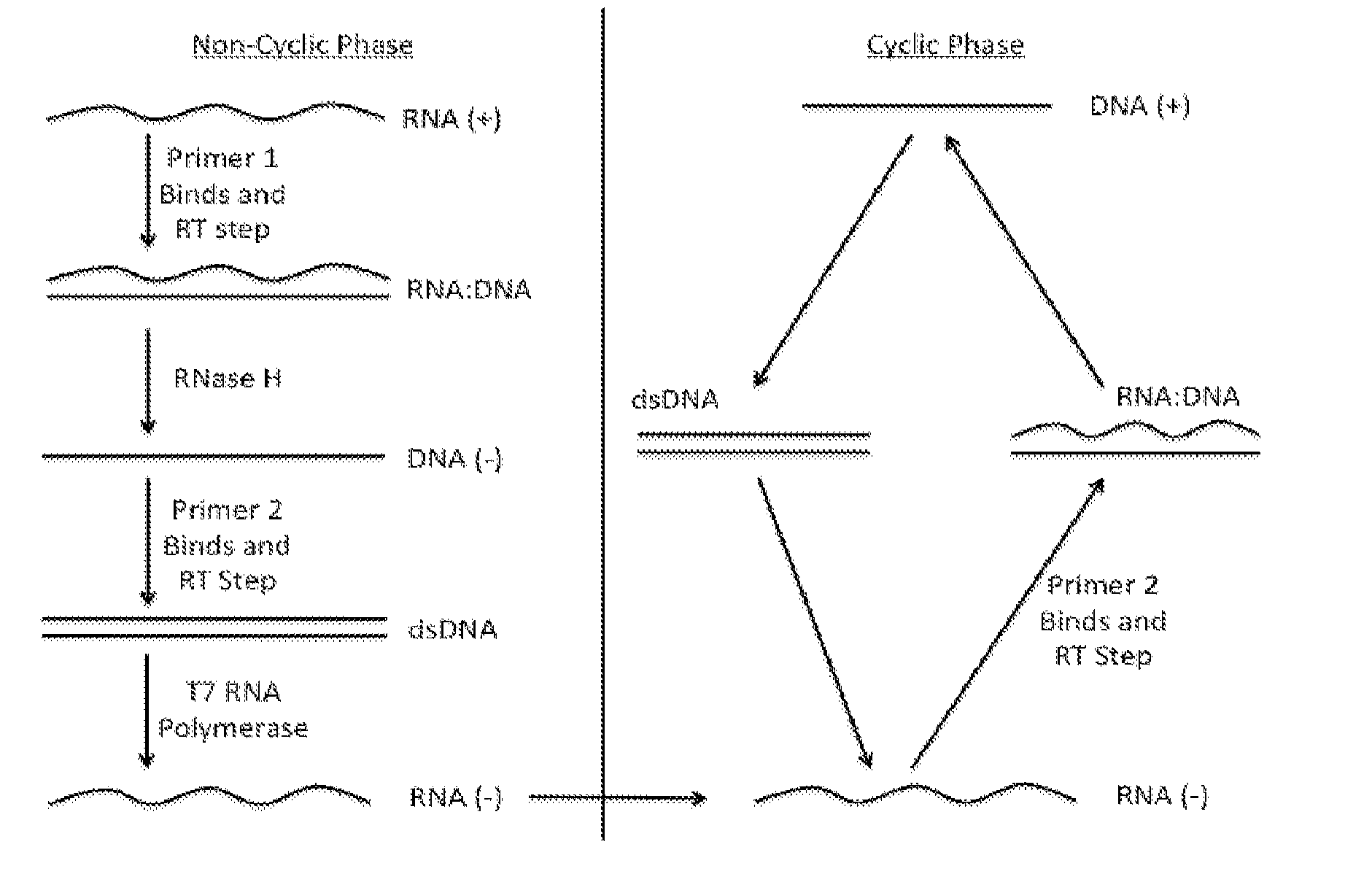Detection of short RNA sequences
- Summary
- Abstract
- Description
- Claims
- Application Information
AI Technical Summary
Benefits of technology
Problems solved by technology
Method used
Image
Examples
Embodiment Construction
[0056]The assay presented here, coined a Simple Method to Amplify RNA Targets (SMART), involves amplifying a probe engineered for improved binding to primers as well as minimizing the secondary structure of nucleic acids to be amplified. In some embodiments, this technique utilizes isothermal, cyclic amplification. These parameters are useful in point of care settings as such conditions minimize the equipment needs. In particular embodiments, the disclosed assay is employed in a microfluidic chip platform.
[0057]The work presented here particularly notes H5 influenza as a target. In addition and without limitation, the method is useful with any RNA based pathogen.
[0058]In particular embodiments, the SMART assay binds engineered ssDNA probes to an RNA target. Then the engineered probes are selectively amplified rather than the target RNA itself being amplified as is typical in the NASBA protocol. Selectively amplifying shall be understood to mean that at least about 80% or more and pr...
PUM
| Property | Measurement | Unit |
|---|---|---|
| Temperature | aaaaa | aaaaa |
| Temperature | aaaaa | aaaaa |
| Temperature | aaaaa | aaaaa |
Abstract
Description
Claims
Application Information
 Login to View More
Login to View More - R&D
- Intellectual Property
- Life Sciences
- Materials
- Tech Scout
- Unparalleled Data Quality
- Higher Quality Content
- 60% Fewer Hallucinations
Browse by: Latest US Patents, China's latest patents, Technical Efficacy Thesaurus, Application Domain, Technology Topic, Popular Technical Reports.
© 2025 PatSnap. All rights reserved.Legal|Privacy policy|Modern Slavery Act Transparency Statement|Sitemap|About US| Contact US: help@patsnap.com



